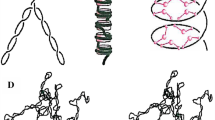Summary
It has been shown that many of the so-called “unknown” causes in biological reactions can be explained through the basic laws of physics, namely that all matter is electrical and that the life principle is due to this electrical state; that the electron shift which continues automatically and ceaselessly in every particle of matter is the factor which releases the energy, as it is attracted or repulsed by the positive or negative charges of the atom, thereby producing the biochemical formations of metabolism.
The two underlying “organizers” in all forms of matter are polarity-consisting of a positive charge at one end and a negative charge at the other in every atom, groups of atoms or molecules and organs; and secondly, oxidation-reduction potential which regulates the electromotive force for the definite level of energy production at the appropriate instant.
This principle has been applied in the case of various experiments designated as “unknown causes” in the literature. They include the “organizer principle in Biology,” why eggs become fertilized, tissue culturesin vitro andvivo and reconstitution of sponge cells from dissociated cells, the basic causes of abnormal growth of cells including cancer cells, and finally some conclusions concerning DNA and RNA.
Similar content being viewed by others
References
Barron, E. S. G., 1930: The catalytic effect of dyes on the oxygen consumption of living cells. J. Gen. Physiol.13, 483–494.
Baumberger, P. J., 1939: The relation between the oxidation-reduction potential and the oxygen consumption of yeast cell suspensions. Cold Spring Harbor Symp.VII, 195–215.
Briggs, R. T., and T. J. King, 1957: Changes in the nuclei of differentiating endoderm cells. J. Morphology100, 269–312.
Brooks, M. M., 1943: Oxidation-reduction potentials of developing marine eggs. Biol. Bull.84, 164–177.
—, 1946: The mechanism of fertilization of eggs. Growth10, 391–410.
—, 1959: Negative redox potentials as the limiting factor for exogastrulation in sea urchins. Protoplasma51, 131–153.
—, 1960: Negative oxidation-reduction potentials resulting from the use of auxins in plants and tobacco smoke on animal cells. Protoplasma51, 620–631.
—, 1961: Nicotine as a redox-reducing reagent. Protoplasma53, 212–219.
Bullock, T. H., 1957: Physiological triggers. Symp. Soc. Gen. Physiology. The Ronald Press Co., New York.
Child, C. M., 1946: Organizers in development and the organizer concept. Physiological Zoology19, 89–148.
—, 1953: Exogastrulation and differential cell dissociation. Physiological Zoology26, 28–58.
Colwin, A., 1949: Effect of lithium chloride and calcium-low sea water on the development of the otolith ofMogula Manhattensis. Biol. Bull.97, 236.
Crane, R. K., 1960: Intestinal absorption of sugars. Physiological Reviews40, 789–825.
Dan, K., and K. Okasaki, 1956: Role of the secondary mesenchyme cells in the formation of the primitive gut in sea urchin eggs. Biol. Bull.110, 29–42.
Driesch, H., 1892: Der Wert der beiden ersten Furchungszellen in der Echinodermen Entwicklung. Zschr. f. wissenschaftliche Zool.53, 160–184.
—, 1929: The Science and Philosophy of the Organism. A. and. C. Black Ltd., London.
Dulbecco, R., and M. Vogt, 1954: Plaque formation and isolation of pure lines of polyomyelitis viruses. J. Exper. Med.99, 167–182.
Farinella-Ferruza, N., 1955: Lo sviluppo embrionaleAscidie dopo trattamento con LiCl. Pubbl. Staz. Zool. Napoli26, 42–54.
Genevois, L., 1928: Coloration vitale et respiration. Protoplasma4, 67–87.
Gurwitsch, A., 1932: Die mitogenetische Strahlung. Springer: Berlin.
Heinrichsen, H., 1839: Ideen über das wechselseitige Elektricitätsverhältniss zwischen dem thierischen Organismus und der äussern Natur. Verlag von Ludwig Schumann: Leipzig.
Karnowski, M. L., 1962: Metabolic basis of phagocytic activity. Physiol. Reviews42, 143–168.
King, T. J., and R. Briggs, 1956: Serial transplantation of embryonic nuclei. Cold Spring Harbor Symp. Quantitative Biol.21, 271–290.
Loeb, J., 1906: Dynamics of living matter. Columbia University Press. MacMillan Co., New York.
Moscana, A., 1959: Patterns and mechanisms of tissue reconstruction from dissociated cells. Eighteenth Growth Symposium. 45–70. The Ronald Press, New York.
—, and M. Moscana, 1952: Developing cell systems and their control. J. Anatomy86, 287–501.
Nieuwkoop, P., 1953: The influence of the lithium ion on the development of the eggs ofAscidia malaca. Pubbl. Staz. Zool. Napoli24, 101–141.
Ranzi, S., and G. Ferreri, 1944: Effeto di LiCl sullo svilippo embrionale delle Ascidia. Boll. Soc. Ital. Sper.19, 10–12.
Reverberi, G., and A. Minganti, 1946: Le Potenze dei Quartetti animale e vegetative isolatidiAscidiella aspersa. Pubbl. Staz. Zool. Napoli20, 135–151.
Reverberi, G., and A. Minganti, 1947: La distribuzione delle potenze nel germe di Ascidie. Pubbl. Staz. Zool. Napoli21, 199–252.
—, 1961: The embryology of Asoidians. Advances in Morphogenesis.1, 55–101. Academic Press, New York.
Sebrell, W. H. Jr., 1960: Some problems in food toxicology. Federation Proceedings19, Part II, 31–32.
Smith, M. J. H., 1958: Effects of salicylate on the metabolic activity of the small intestine of the rat. Amer. J. Physiology193, 29.
Steward, F. C., and H. Y. Mohan Ram, 1961: Determining factors in cell growth. Advances in Morphogenesis. Academic Press1, 189–261. New York.
Warburg, O., 1910: Über die Oxydationen in lebenden Zellen nach Versuchen am Seeigelei. Zschr. physiol. Chem.66, 305–340.
—, J. Gawehn, A. W. Geissler and S. Lorenz, 1960: Über die Umwandlung des Embryonal-Stoffwechseis in Krebs. Hoppe-Seylers Zschr. physiol. Chemie321, 252–257.
Weiss, P., 1945: Role of colloidal exudates in tissue organization, J. Exper. Zool.100, 353–386.
—, 1958: Cell contact. Intern. Review of Cytology7, 391–422.
Wilde, C. E., 1961: The differentiation of vertebrate pigment cells. Advances in Morphogenesis1, 267–300. Academic Press, New York.
Wolfe, E., 1954: Potentialités et Affinités des Tissues. Soc. Zoologique de France79, 357–368.
Author information
Authors and Affiliations
Rights and permissions
About this article
Cite this article
Brooks, M.M. The electrical property of matter, the trigger mechanism controlling cell growth. Protoplasma 57, 144–157 (1963). https://doi.org/10.1007/BF01252050
Received:
Issue Date:
DOI: https://doi.org/10.1007/BF01252050




